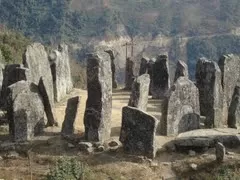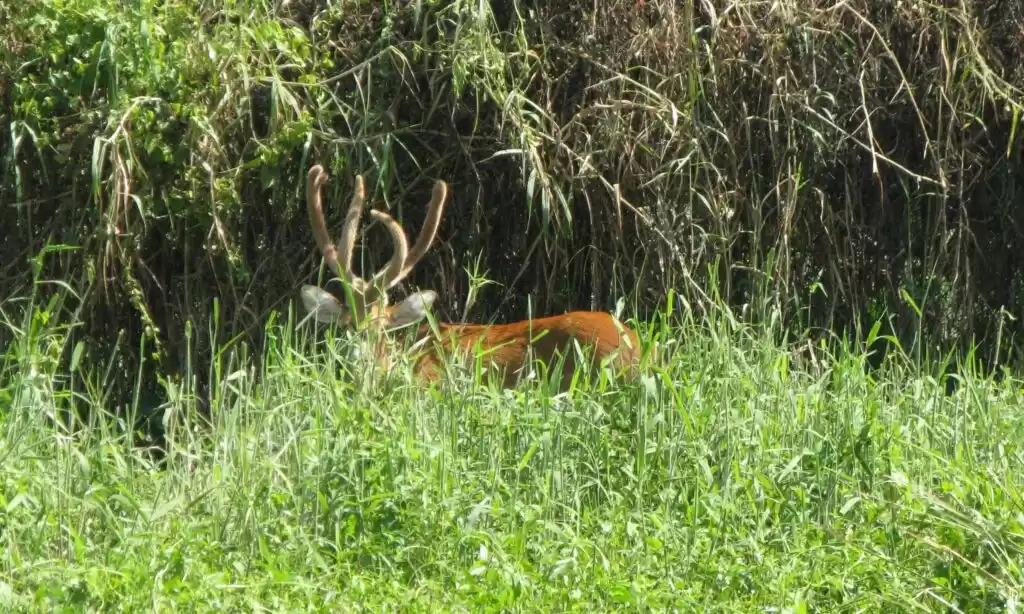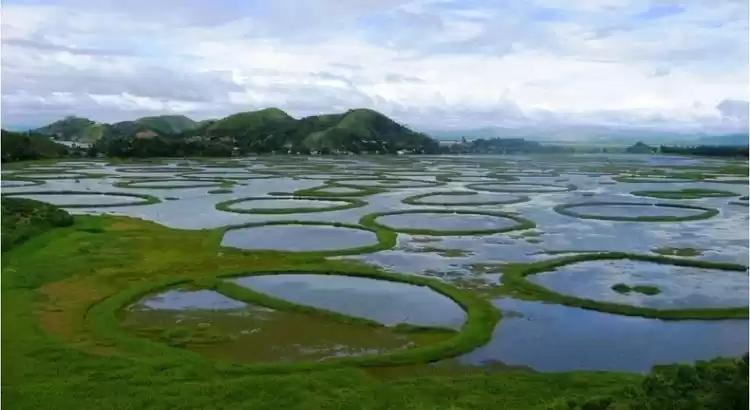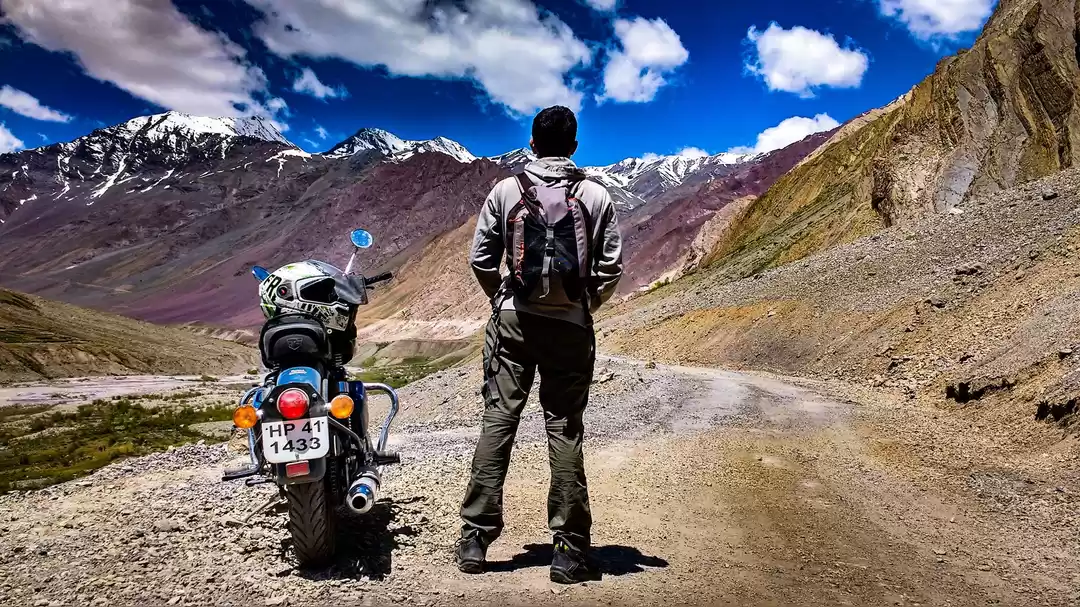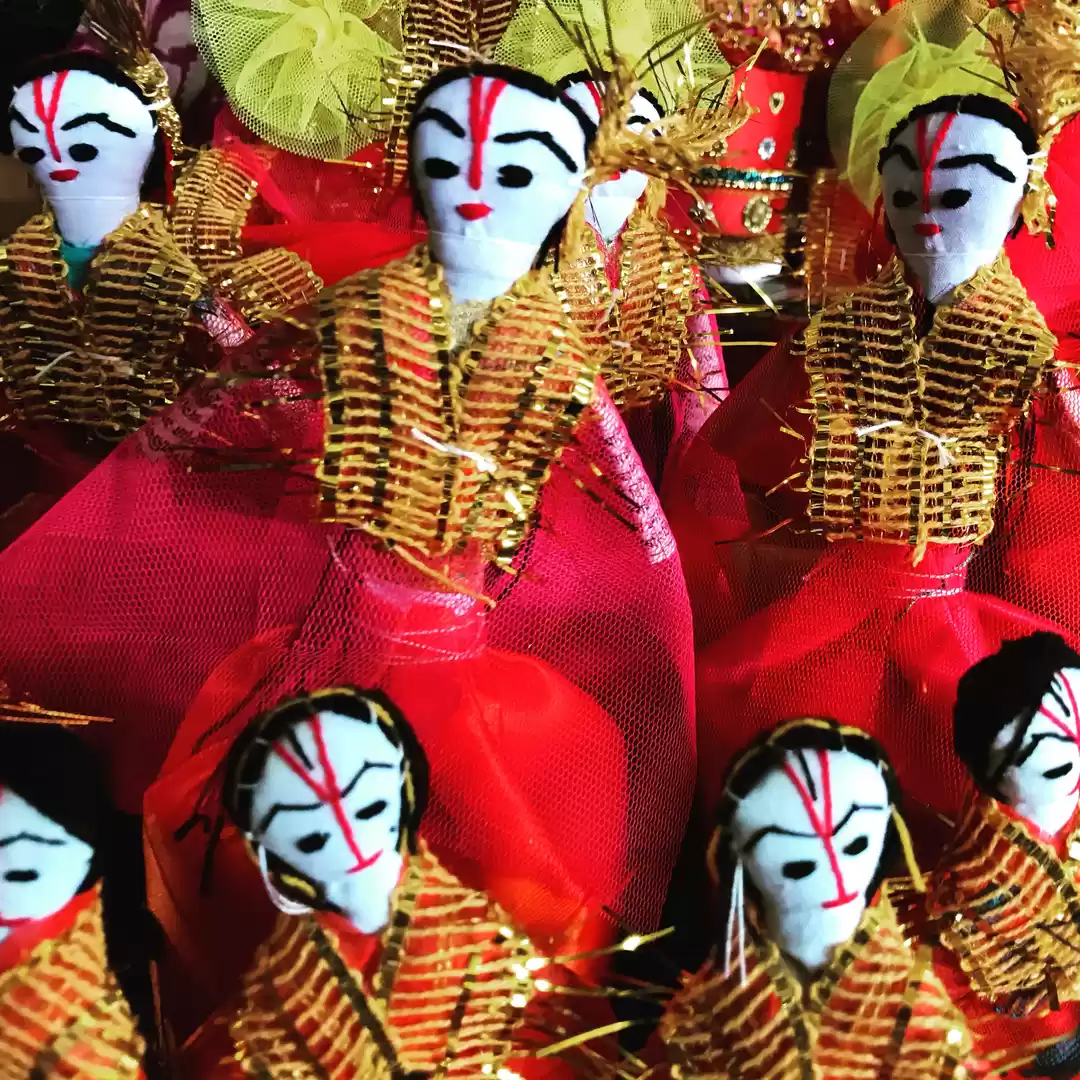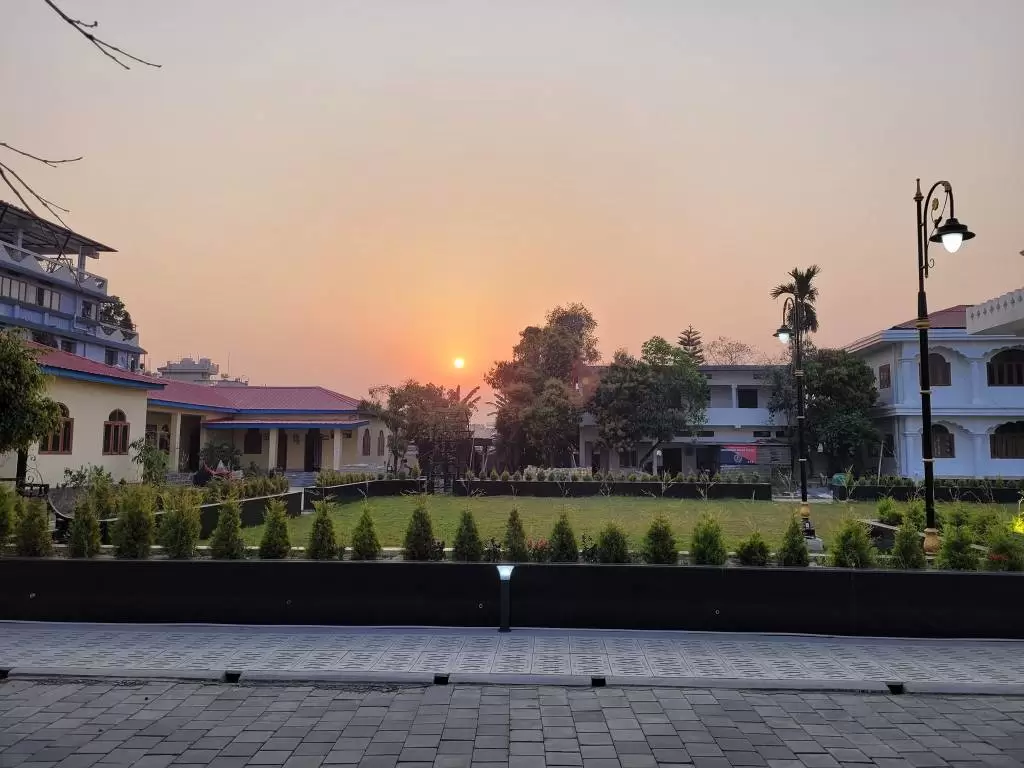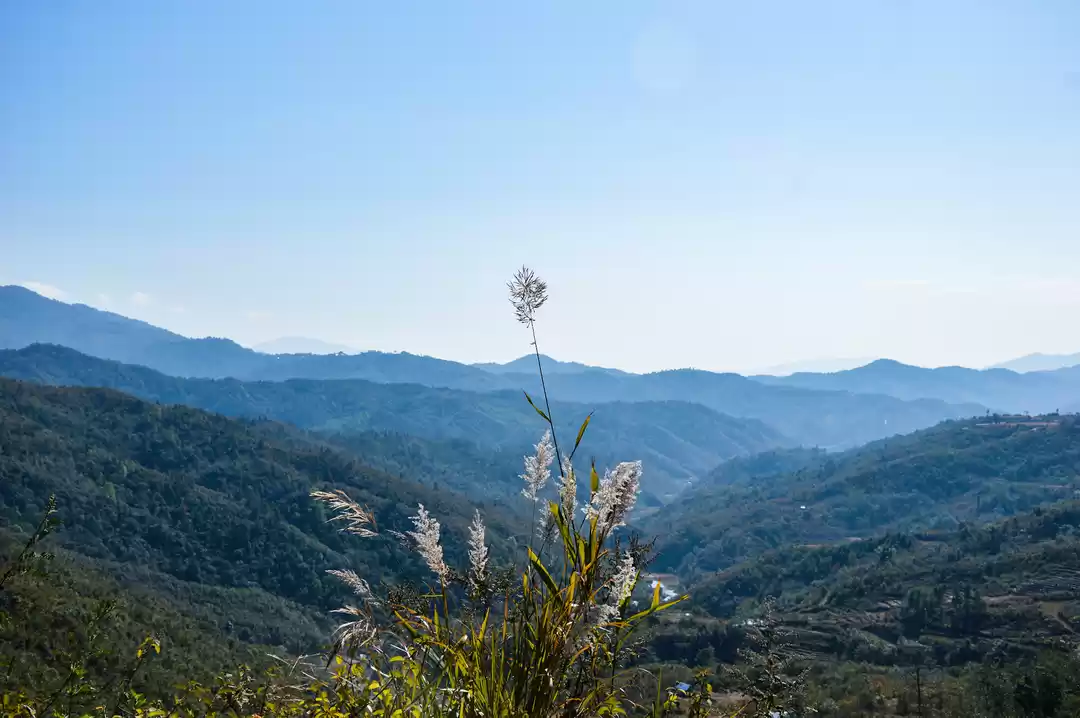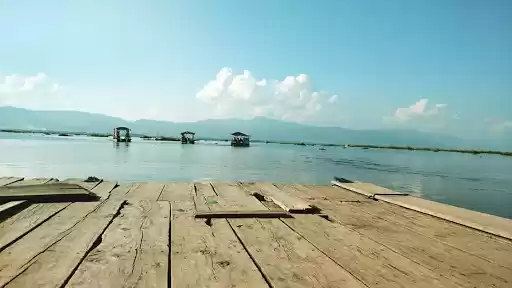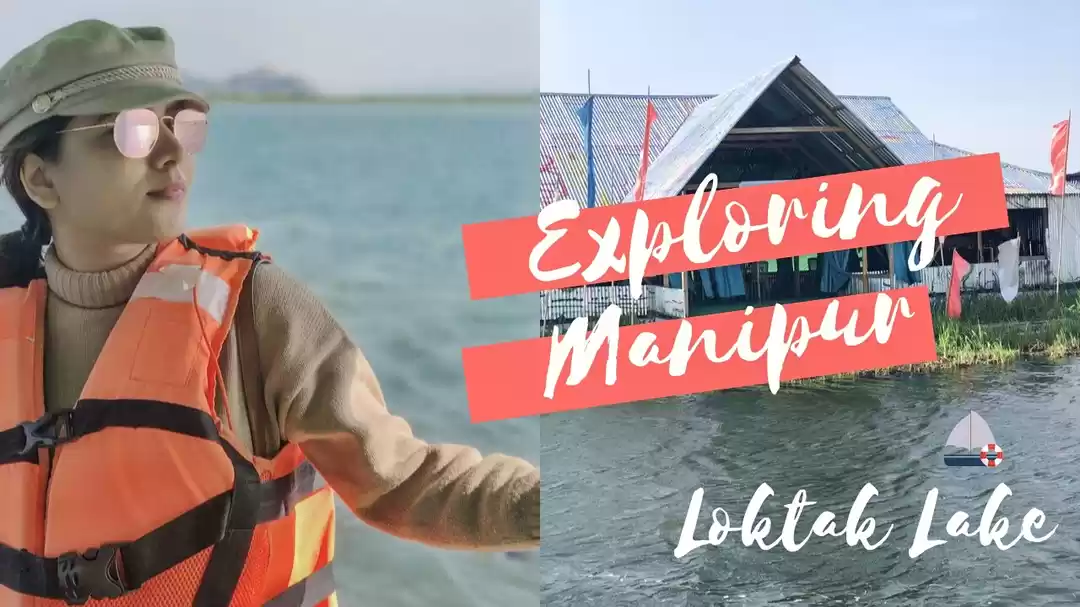
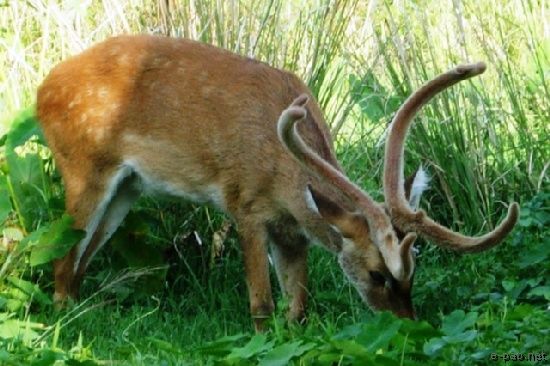
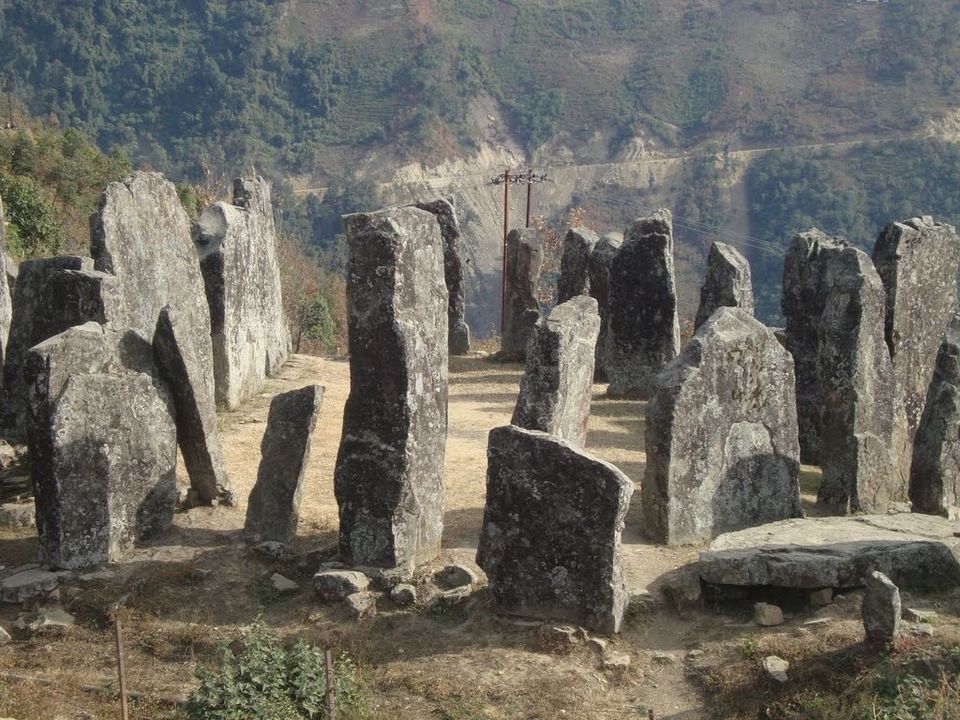





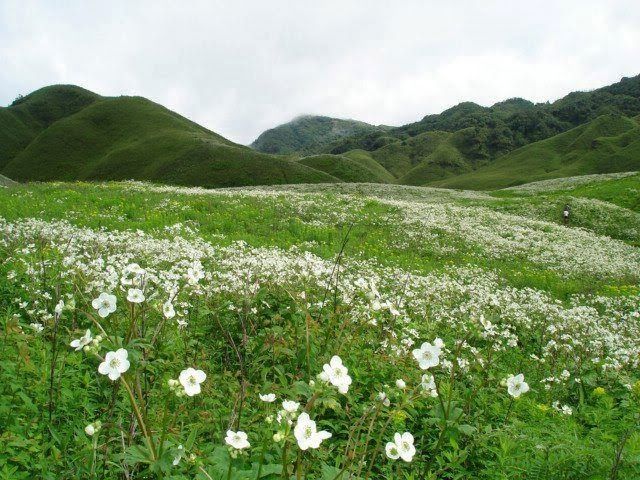
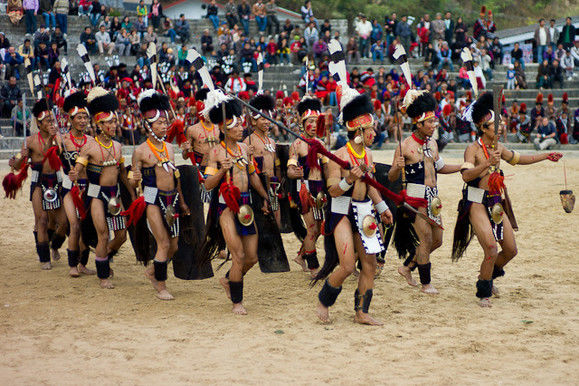
I had just endured a spate of festivals and pujas, and was really raring to go on an adventure. So when a friend of mine as much as mentioned Manipur, I went ahead and bought the tickets! And cost a bomb they did, given that I was buying them at a short notice and in the peak season. But when the travel bug bites, cost really does not matter, does it. Anyway, railways would be reaching the state only by 2016, according to a government website. So we set off, a group of 5 friends, to explore the place that's fondly called the jeweled land. One of the seven sister states of North East, Manipur shares its borders with Nagaland, Assam and Mizoram on one side and Burma on the other. Nestled among the Eastern flanks of the great Himalayas, Manipur is also known as India's Switzerland, or so I am told.
Our flight landed in Imphal amidst mild fog. Since it was August the summer was already past and winter was looking to creep in. The monsoons were meanwhile blessing the state amply, and we almost feared our trip would be all but washed out. However, right from the time we landed, the Sun God kept us good company, making the weather remarkably pleasant for outdoor activities. A quick shower and a sumptous breakfast at the Classic Hotel where we had checked in, we were ready to make most of our five day trip. We were very sure that we did not want to visit the usual places that people went sightseeing - monuments, parks and the like. So we directly headed to those places that makes Manipur befit its name.
Our first stop was the Loktak lake, which is the largest freshwater lake in North East India. It is located in Moirang, an hour's drive from Imphal, and is home to huge masses of floating phumdis, which are vegetation in various states of decomposition. Which basically means, the lake is dotted with hundreds of small floating islands, the largest of which is is Keibul Lamjao National Park, home to the Sangai deer. A government official who supervises the tourist activity in the area told us that rampant tourism and fishing activities have caused a depletion in the green cover, but serious efforts are on to preserve this biological wonder. I had always thought such exotic locations could be found only on foreign countries. And to have one in our own country and not even know about it! Two of the largest Phumdis's Sendra and Phubala, offer boarding and dining facilities to the tourists. Imagine living on a floating island of weeds! We immediately cancelled our plan to return back to Imphal that night and stayed on at the Sendra Tourist Home. We stayed up till late in the night, watching the night descend on the peaceful waters, the stars playing hide and seek with their reflections and listening to the calls of the birds and animals.
Our enthusiasm only heightened the next day, when we got ready to explore the Keibul Lamjao National Park. We reached the park by a boat, and were greeted by signboards and pamphlets giving detailed instructions for what to do and what not to do in the park. Our guide had advised us beforehand with some of these, like wearing dark colored sparing clothing, and no perfumes, so we were ready. The park is home to a diverse fauna, like crocodiles, deers, Sengai, boars, civets, and flying fox, among others. Hence it is in our best interest that the animals are not disturbed. So no loud music, no heady perfumes and no boisterous voices.
You have to go in and come out without creating ripples in the serenity that surrounds the place, and that in itself adds a great charm to it. After spending almost a day in and around loktak lake and Keibul Lamjao, it was with a heavy heart we came back, craving to go back again soon.
The next day we had signed up for a trek with Khonoma tours and treks (http://khonomatoursntreks.org). This trek took us to the DzukouValley, situated at about 2300 kms above sea level. We started in the wee hours of the morning, on a 3 hour ride that took us to the starting point of the trek, having breakfast enroute and packing lunch for later. What ensued was a 3 hour laborious but scenic trek, winding up through the shades of the jungle. We took a break after 3 hours and had lunch, a sumptious affair packed by the trek organizers, then continued towards our destination, Sancuary falls. The whole valley is a carpet of red and white lillies and numerous other flowers, and looks straight out of a romantic dream. A perfect place to be with one's loved one. Sadly, here we were all buddies, our loved ones way back in the cities we had left behind. The falls itself is a breathtaking vision, and nothing could keep us off its milky waters after the strenous journey. Refreshed and rejuvenated, we retreated to the caves that were to be our homes for the night, and to the warmth of a bonfire, lunch and drinks.
While lounging in our caves during the night, our guide told us about Willong, India's very own Stonehenge. And so the next day we set off in search of this quaint little village situated on the Maram-Peren road, some 40kms from NH39. There were about a hundred stones standing in erect position, some as high as 7 mts tall. These structures are believed to have been erected by the forefathers of the land and supposedly have some close connection with mythology, but the locals were not able to give anymore details. The structures seem to be taking the brunt of the climate however, for many were in various states of wear and tear.
Two days out in the open had tired us out, so we spent the next day resting for sometime in our hotel room. Late in the afternoon we left to explore the city of Imphal, for there were quite a few promising locations here as the map told. Manipur was one of the places where battles of World War II were fought between the British and the Japanese forces, with Indian soldiers feeding the British manpower. Needless to say, Imphal stands testimony to many tales of wartime courage and resilience and pays homage to its martyrs. We visited a couple of these monuments - The Red Hill and Shaheed Minar, while exploring the the streets and markets of this lovely city. One of the interesting markets we came across was the Ima market, where all the vendors are called Ima, or Mother. Manipur is famous for its handlooms, and we made quite a few exquisite purchases to make the folks back home happy.
The week had passed so soon that we did not even notice. Soon it was time to say goodbye to this lovely little town and head back to our busy city lives. When we boarded our flight for return, it was with a rejuvenated mind, a spent but fresh body and a contented and happy heart.
If you have seen the movie Life of Pi, you will know what I am talking about - an island of weeds floating in a lake. An island with weeds so dense that you can step on it, walk through it and even build structures in it. There are many such islands, of Phumdis, on Loktak lake, the largest being the Keibul Lamjao, Sendra and Phubula. It is unlike anything I have seen before, or am likely to see again.


The largest Phumdi on Loktak lake which is also the home of the rare species of antlers - Sengai. The National park also boasts of a variety of flora and fauna, not to mention the birds. A serene and tranquil environment, which the forest authorities take extreme care to not disturb.


The valley is on Manipur - Nagaland border, and is itself situated over 2000 kms above sea level. It is almost a heaven on Earth, complete with a blanket of colorful flowers, Lilies, Rhododendrons, Orchids... and not to mention the awesome Sanctuary falls.


India's very own Stonehenge. The stones have been erected by the forefathers of Manipuri people, and are said to be connected to Mythology.
